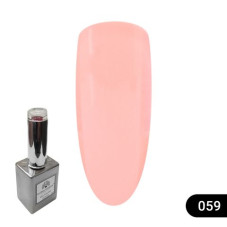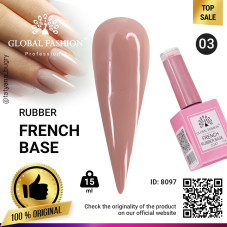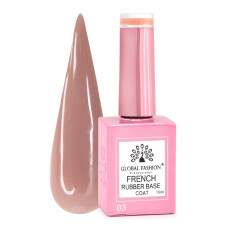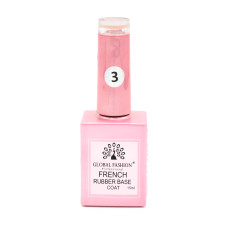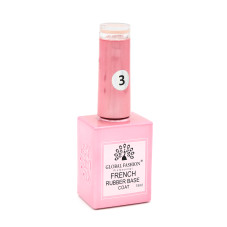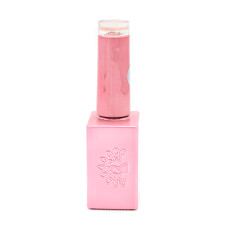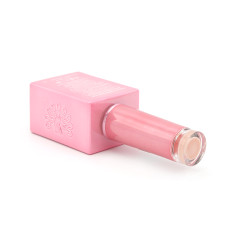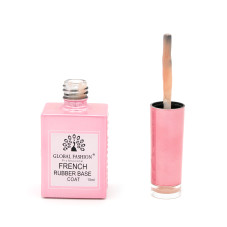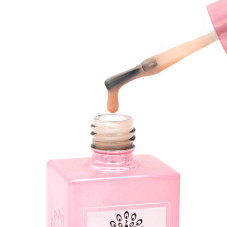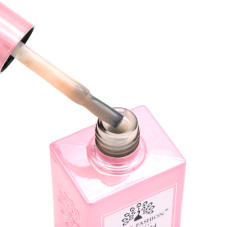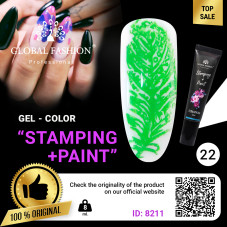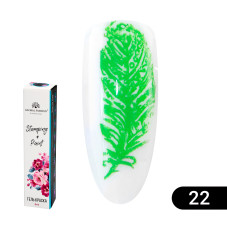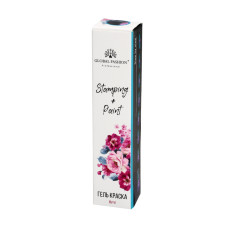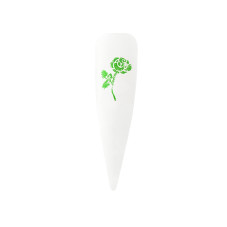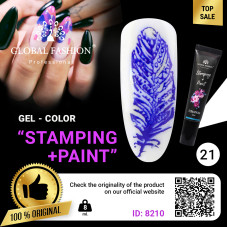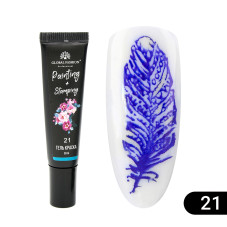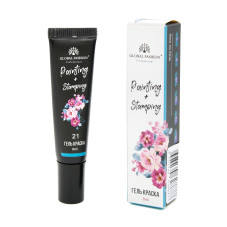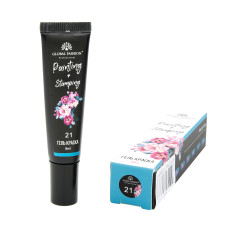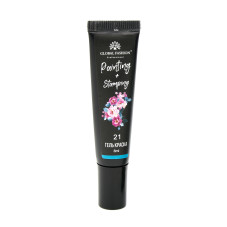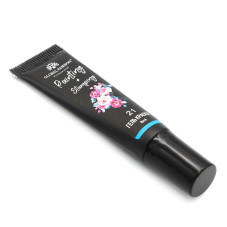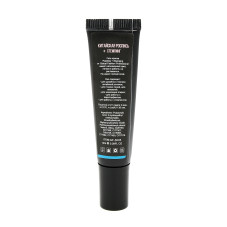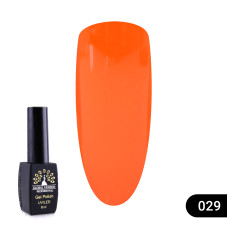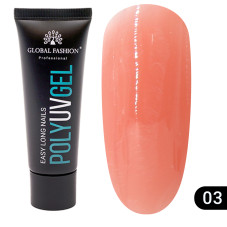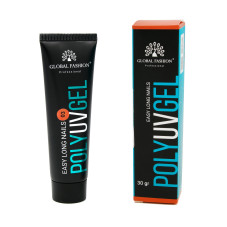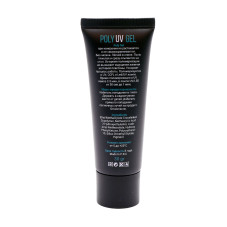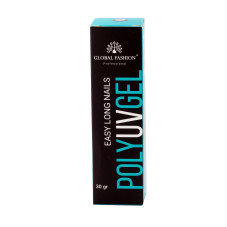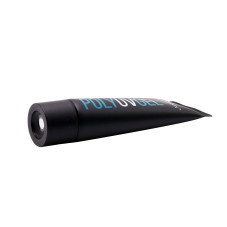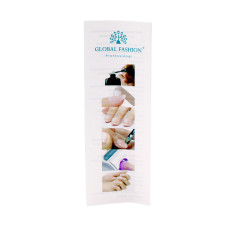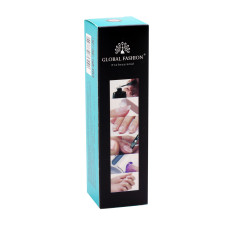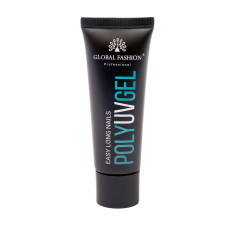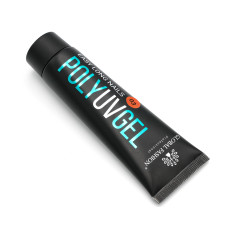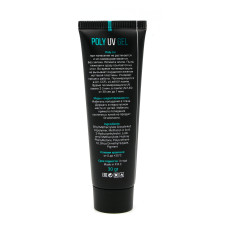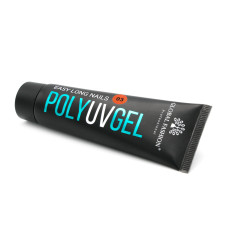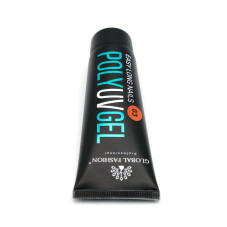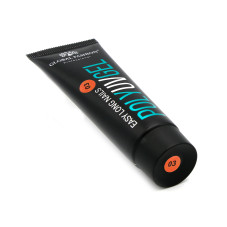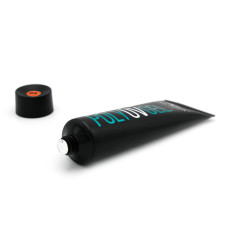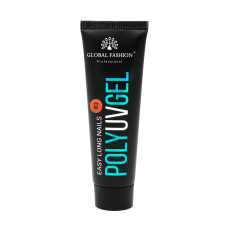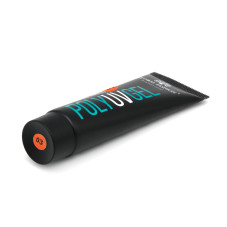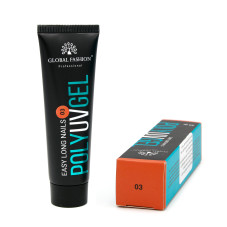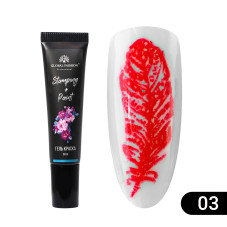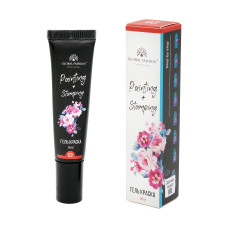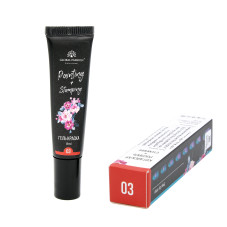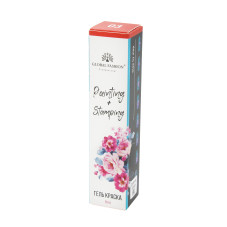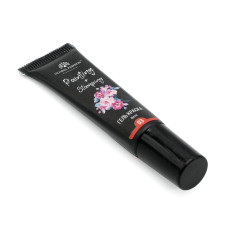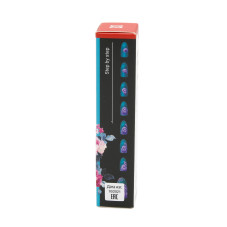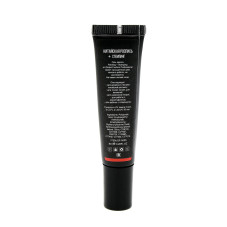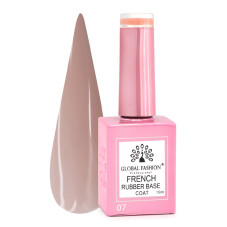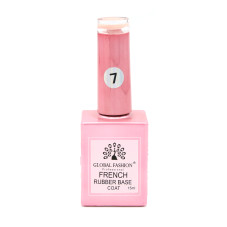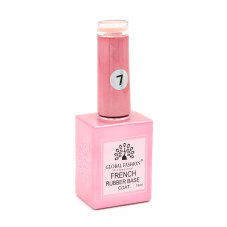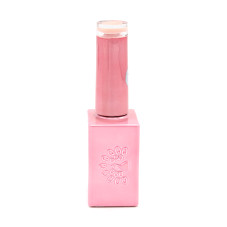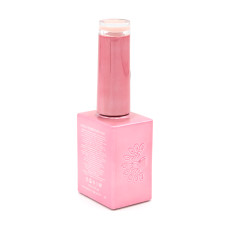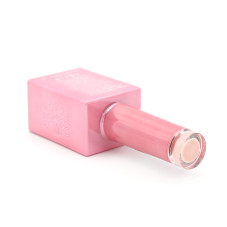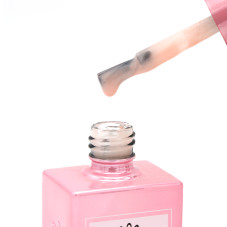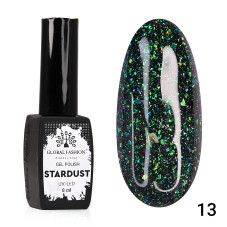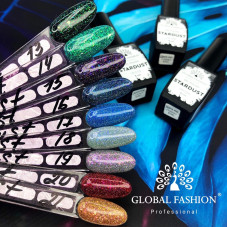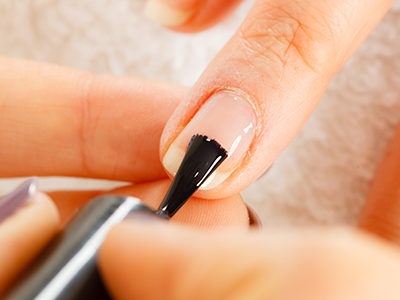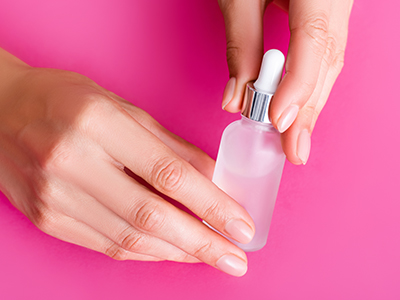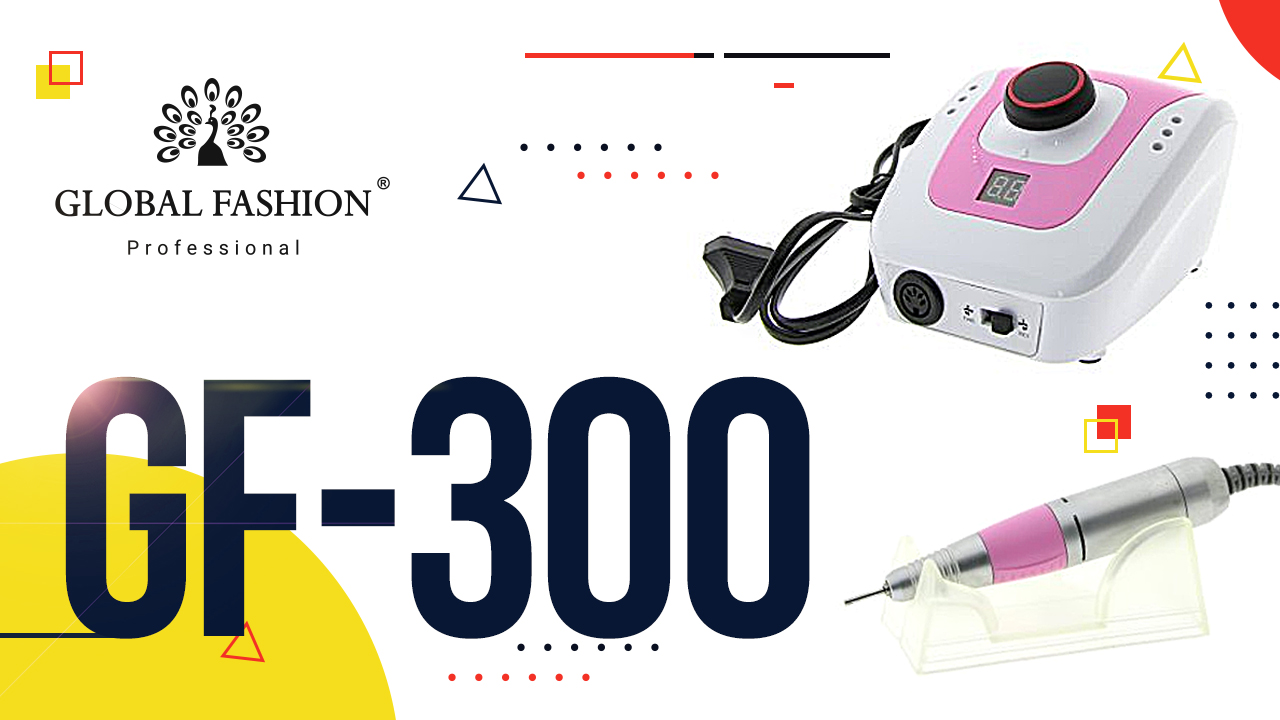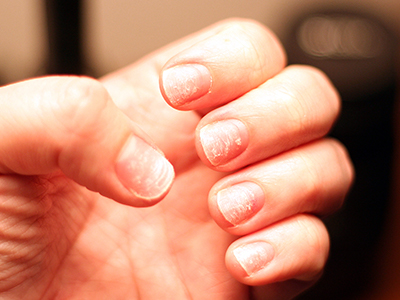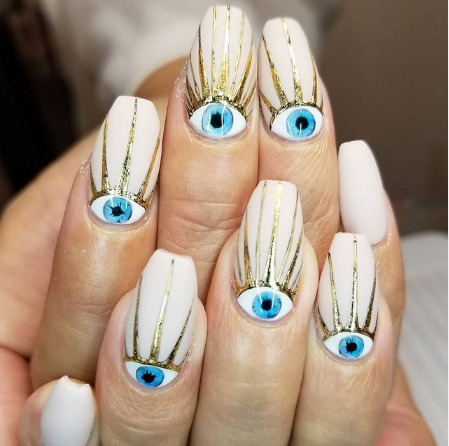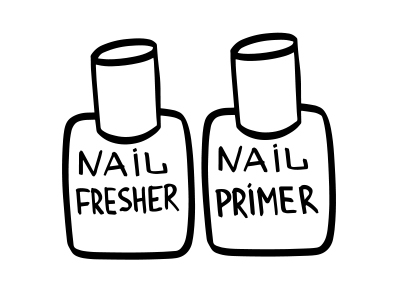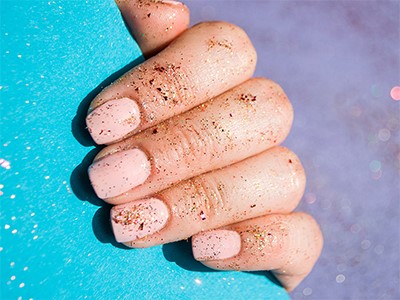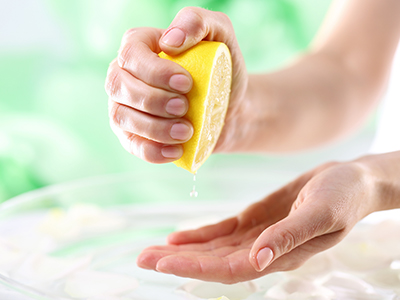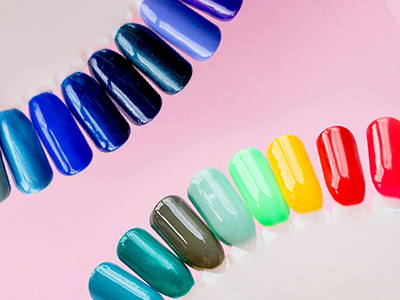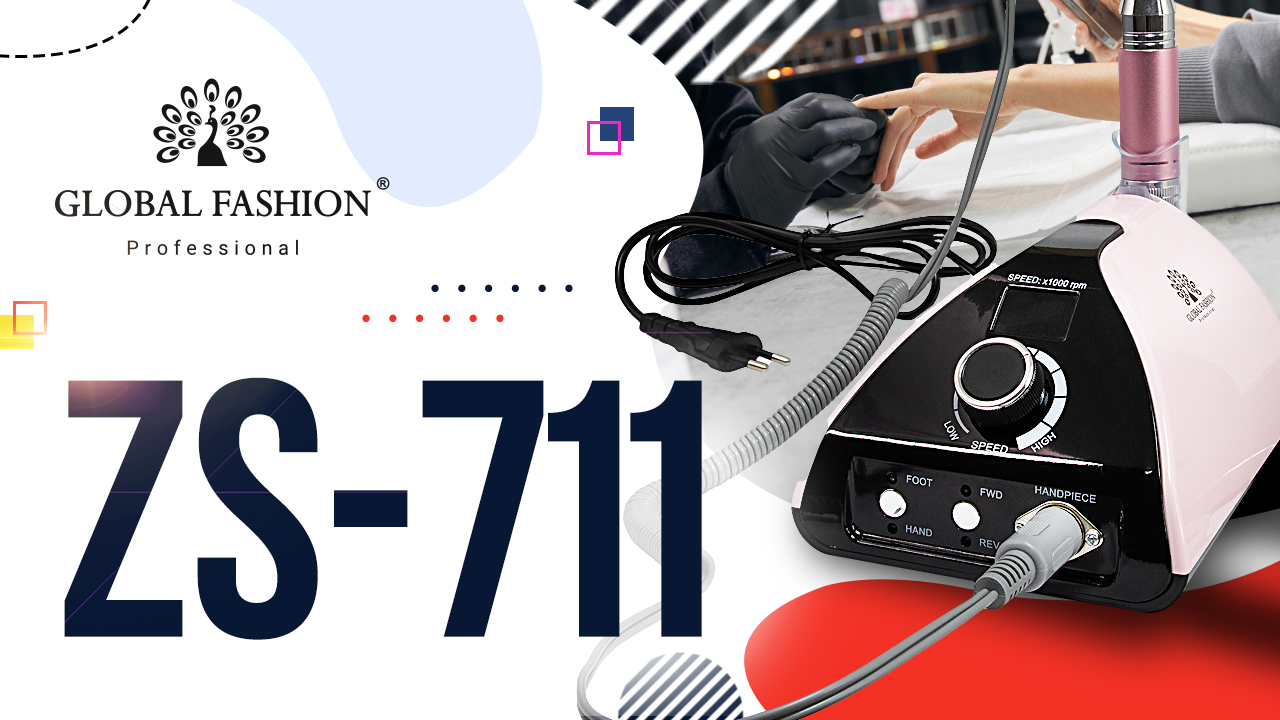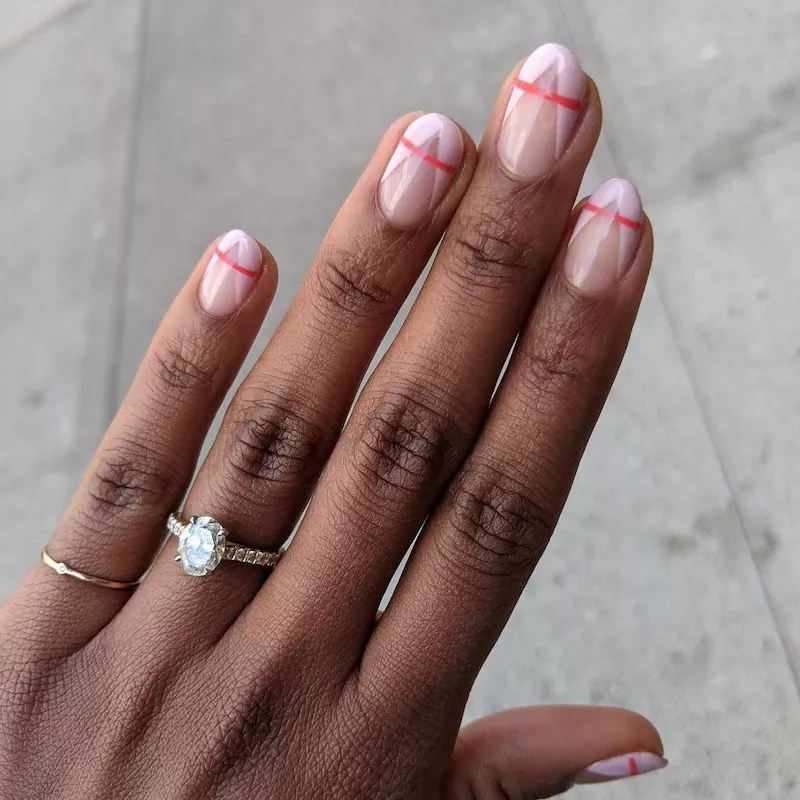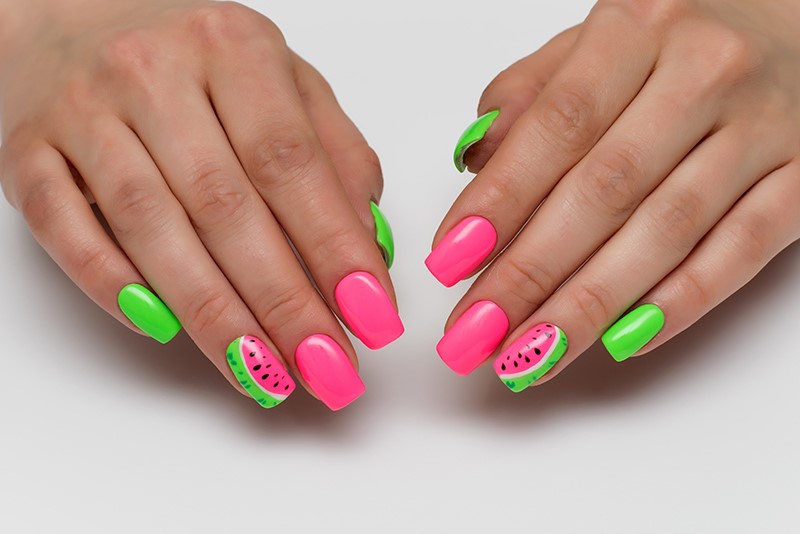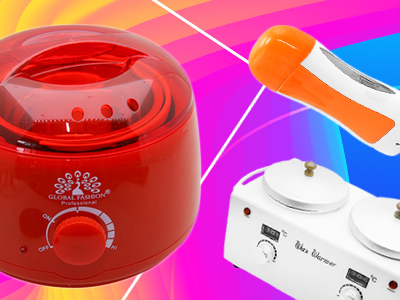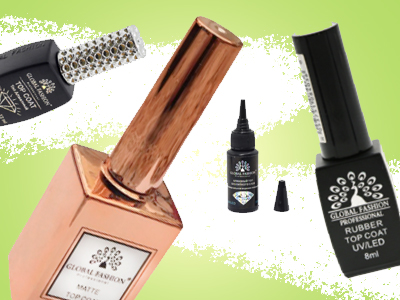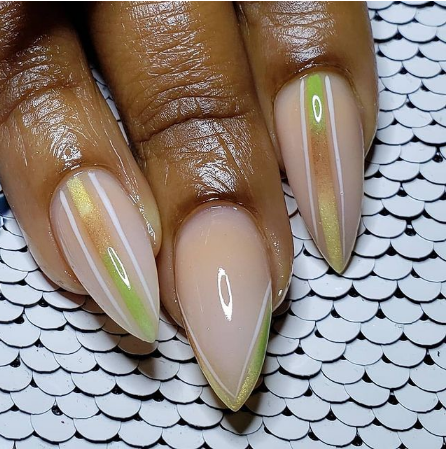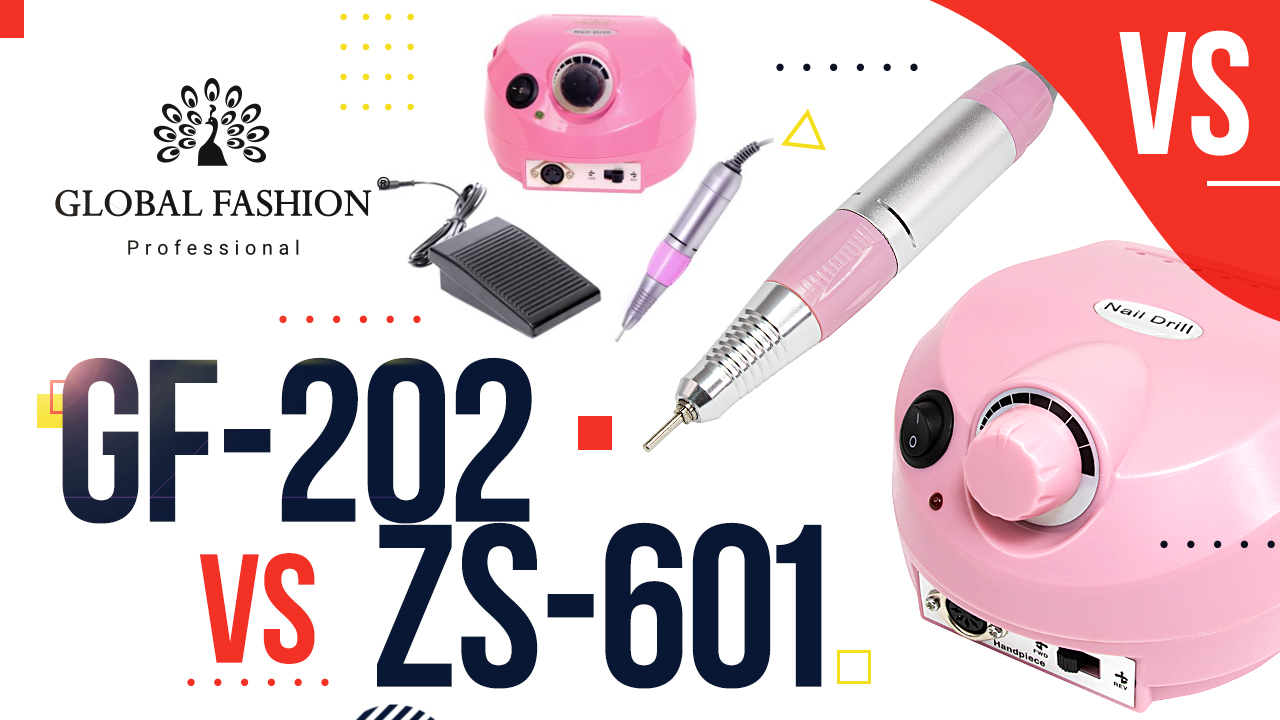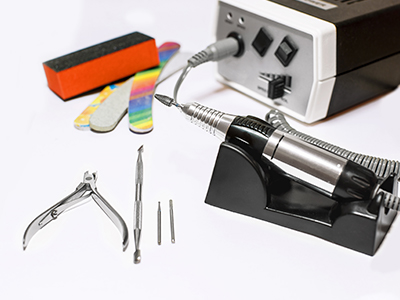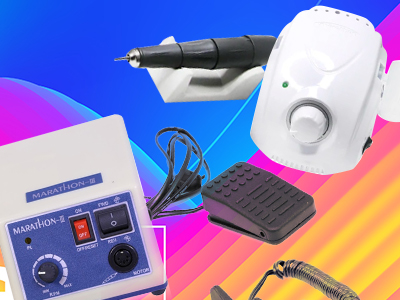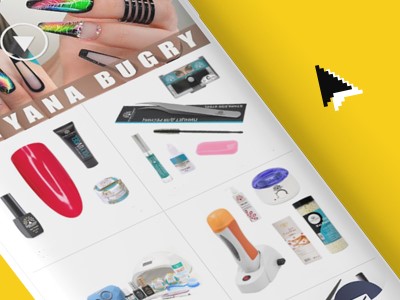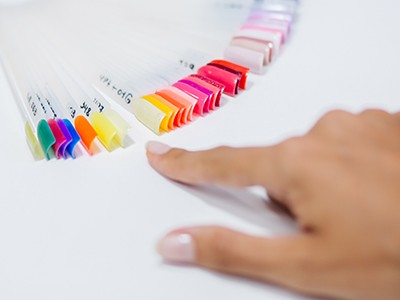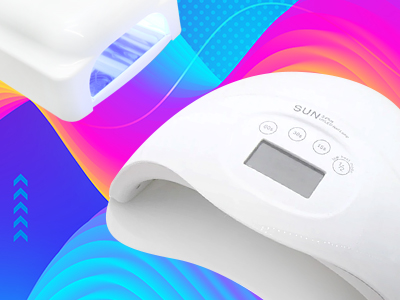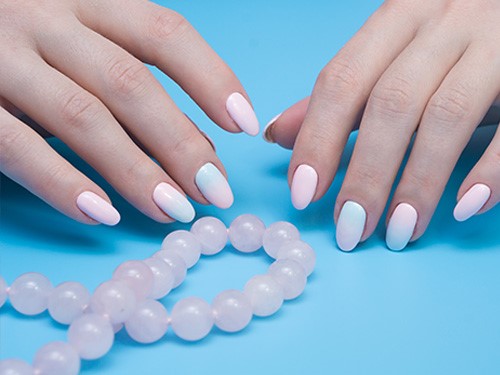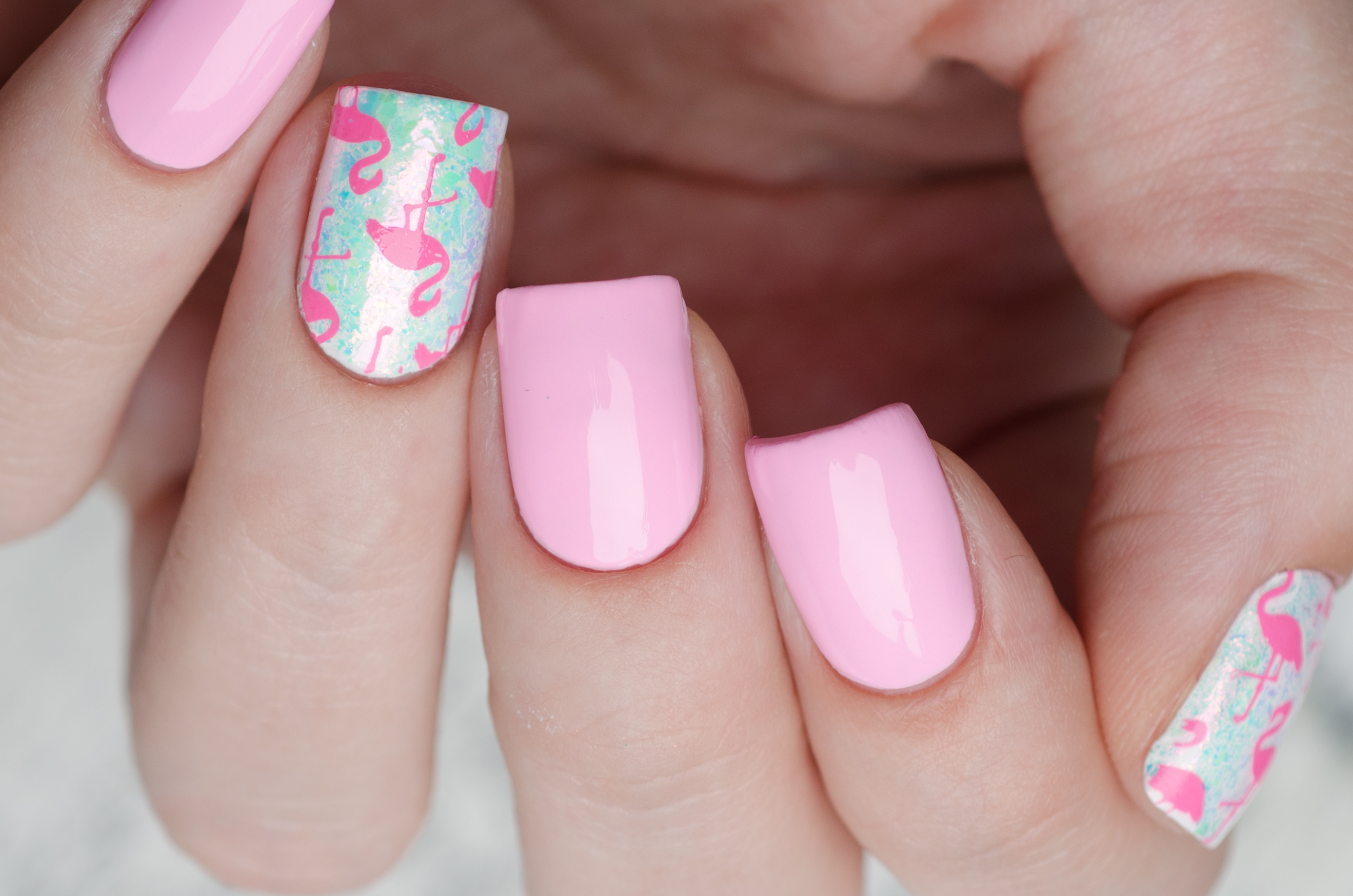Nail file. An indispensable tool in every girl's make-up bag
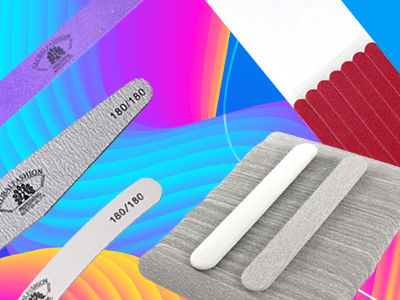
It's common knowledge that most girls are concerned about how their nails look. After all, beautiful nails are an indicator of a girl's grooming and femininity. And the prettier the manicure, the more chances to win the attention of male representatives. Manicure is quite an intense process, but it's worth it, because after it, hands and nails look alive. No manicure kit is without such an important tool as a nail file. And it is not a surprise, because what tool can give a smooth and beautiful nail shape but a nail file. It should be such a tiny object, but without it manicure just can not be. But for all that, not all products can bring the desired result. Therefore, craftsmen always pay attention to the quality of nail file, the material from which it is made, the hardness, price.
We'll help to understand what is a nail file, what you should pay attention to when choosing one, its advantages and disadvantages, and will try to explain some of the nuances.
A nail file is an important tool in a manicurist's arsenal. A file can be used to shape nails, file off unnecessary length, and polish the surface of nail plates to a shine. The file, however, can injure nails, if you are wrong about its quality and properties.
Nail files, in their scope of use, can be divided into the following types:
- By the degree of abrasiveness (hardness).
- By form.
- By material.
- By function.
Now let's understand the details.
Types of files on abrasiveness
60-100 grits. The hardest files. Designed only for artificial nails: they perfectly copes with the correction of the length of the artificial nail plate. Suitable for pedicures and easily copes with corns.
100-150 grits. A manicure file with such hardness is used to shape artificial nails. Double the abrasion index (100/150) can be found. It means that the file has two working planes, and the numbers are the hardness values of each of them.
240 grit. The most universal variant. Files of this hardness are suitable for all natural and artificial nails. It is soft enough not to harm even weakened nails.
250-400 grit. This type of manicure files is very soft. They are ideal for polishing, completing the process of correcting nail shape.
400-900 grits. A file with abrasiveness in this interval is necessary to prepare the nail for buffing. Suitable for both natural and artificial nails.
900-1200 grit. The softest. As a rule, these are soft buffs with which you can polish your nails to a mirror shine without causing any damage.
Types of files according to their shape
Oval files are designed to correct the shape of natural or artificial nails.
Boomerang - for rounded nail shapes and filing of artificial nails at the cuticle.
Rectangular - for shaping the length and shape of artificial nails.
Rhombus - shaped, considered the most suitable for shaping of artificial nails.
Dome - for correcting the shape of artificial nails along the whole length.
Polish file can be of any shape and have up to six levels of hardness.
Types of files according to material
Glass files - glass files are long-lasting, easy to use and are not harmful to the nails. Glass files vary in length, thickness and abrasiveness (hardness of the file's working surface). A glass file is endowed with universal features which enable filing of nails on hands and feet including artificial nails.
Ceramic file - These files have a ceramic coating which ensures good quality of the tool. Being perfectly abrasive a ceramic file is used to work on thin or injured nails (e.g. after gel or shellac removal). A ceramic file is a professional tool. A ceramic file is very fragile and is usually luxuriously packed in a special file casing.
Diamond file - Diamond coated files make it possible to file free edge of the nail in all directions. It can be used for polishing and cuticle removal as well as for removing roughened skin on the lateral rims. The texture of the file and the diamond coating does not harm your nails by sealing the tip. Such a file belongs to professional tools and craftsmen use it when working on natural nails or artificial nails.
Metal file - coarse dusting of the file causes severe damage to the nail surface resulting in splitting, therefore it is better not to use it! A metal file is most often used to shape false or false nails. If you use a nail file on native nails, you may get splitting and cracking almost instantly. Even when using a nail file on artificial nail tips it is important to do so with care.
Paper file - This type of file is made from specially treated cardboard coated with granite, quartz or teflon chips. The working surface is on both sides, so if one goes bad, you can use the other. Paper nail files can be disposable for salon use or reusable for individual use.
Plastic nail file - This manicure tool has a plastic base, which can be flat or foam. The first version is usually used for filing nails, the second is like a machine for grinding (buffing for polishing). Also this tool can be both bendable and hard. A plastic file is used to file thin and soft nails.
A buff file is a special file in the form of a volumetric rectangular bar, each facet of which has its own abrasiveness. The main functions of this tool are grinding and polishing of natural and artificial nail plates, from which it removes irregularities and small imperfections.
Types of files according to their purpose
A file to file the cuticle. Whatever nail shape you choose, your fingers are always in need of a cuticle file. The most effective method is to use specialised nail files: laser or ceramic. Laser files are more suitable and are approved for use on very thin, brittle nails and the cuticle. They are used to remove solely dead tissue.
Polishing files. The nail plate must not only be trimmed, but also polished. For this purpose, it is recommended to use specialised polishing buffs, which give a shine to the nail. When choosing an appropriate buff, you should pay attention to the purpose: polishing and building up the nail plate.
The simplest version of the baffle is a polishing cube, which has facets with different abrasiveness.
Disadvantages and advantages of different types of nail files
Glass files. Advantages: handy, hygienic, not afraid of moisture, gives a neat and even cut, improves the condition of the nails, available in different sizes and shapes, durable glass, affordable price. Disadvantages: it is recommended to store in a special case, not suitable for false nails, fragile - may break at the slightest fall.
Ceramic nail file. Advantages: long-lasting, disinfects with any solution, does not splitting nails. Disadvantages: can break if falling on a hard surface.
Diamond files. Advantages: water resistant, strong, versatile, does not damage the nails. Disadvantages: expensive.
Metal files. Advantages: inexpensive; available - can be purchased at any shop; does not require special warehousing conditions; not afraid of moisture; long file life. They can ruin nails; the abrasive on the most inexpensive models is easily erased.
Paper files. Advantages: low cost, lightweight, available in all sizes, types and shapes colorful design and variety. Disadvantages: they wear out quickly and become unusable, they cannot be washed and are difficult to clean.
Plastic file. Advantages: long life, versatility, affordable price, easy to disinfect without damaging the instrument. Disadvantages: It is intended for single-use.
Buffing file. Advantages: smoothes the nail, polishes, gives shine. Disadvantages: Cannot be wet or disinfected.
Can I wash nail files?
Not everyone knows how to properly care for such a specific item - a nail file. It must be cleaned and disinfected regularly. Can nail files be washed? Let's get this straight!
Water and any other liquids are afraid:
- paper files.
- wooden files.
- those with a cloth backing.
- Some files have a specific coating which rubs off over time.
- Many types of files for polishing.
They are not afraid of water and disinfectants:
- glass or crystal files.
- ceramic files.
- metal.
- plastic.
- Most files are sprayed.
- foam-based (buffs and blocks).
- tips for electric files and machines.
It is very important to observe the sterilisation procedure for all manicure tools. This is done to prevent the spreading of harmful bacteria. A nail file is no exception to this, it too must be disinfected.
How to disinfect nail files
- To begin with, files are disinfected with special solutions.
- The next step is the direct cleaning of files.
- The tools are then carefully sterilized.
- After the file treatment it is necessary to store it properly.
Moisture resistant files should be washed with a soft brush or sponge under running water, possibly with some laundry soap or baby soap.
For files that are sensitive to water, it is preferable to use a dry brush. As a last resort, it is possible to dab the instrument with a cotton pad soaked in alcohol. Paper files, no matter how good they are, are considered as disposable, they cannot be immersed in any liquid, the tool of this type will liquefy and become unusable. Therefore, when using such files at home, they are not soaked in a solution, and treated with a spray. In the same conditions of beauty salons such files cannot be reused. They must be destroyed immediately after the manicure is completed. Diamond files are not subject to normal disinfection. When working with them you need to follow the recommendations set out in the instructions for the tool.
Many people wonder how to choose a nail file correctly, so that it allows you to create the desired shape and length of nails. It is rather difficult to determine which nail file is better, because much in the work of the tool depends on the individual characteristics of the nails, as well as the working conditions of the file. Nevertheless, there are some parameters in choosing a nail file.
Parameters in choosing a nail file
1. The condition of the nails. If the nails are weak, chipped and broken they need a soft file with plenty of grit and a fine dusting.
2. The material. It depends on how long you are going to use the tool and for what purpose (salon or home care).
3. Abrasiveness. According to this index file is divided into: hard nail file that is suitable for correcting and extending nails, nail file of medium hardness used for giving shape to nail plate, and soft nail file that is used for correcting the length of natural nails. Buy nail file
As promised, we have shared with you the important points when choosing a nail file. We have tried to provide the right information about them with clarity. Now it's your turn to put everything you've read into practice.
Read also:
1. Gel nail polish. All the best part
2. Manicure extractor. Master and client safety
3. Brush for nail gel extensions: how to choose?
4. How to choose a manicure lamp? Let's understand the nuances!
5. Manicure router. Manicure art helper
We'll help to understand what is a nail file, what you should pay attention to when choosing one, its advantages and disadvantages, and will try to explain some of the nuances.
A nail file is an important tool in a manicurist's arsenal. A file can be used to shape nails, file off unnecessary length, and polish the surface of nail plates to a shine. The file, however, can injure nails, if you are wrong about its quality and properties.
Nail files, in their scope of use, can be divided into the following types:
- By the degree of abrasiveness (hardness).
- By form.
- By material.
- By function.
Now let's understand the details.
Types of files on abrasiveness
60-100 grits. The hardest files. Designed only for artificial nails: they perfectly copes with the correction of the length of the artificial nail plate. Suitable for pedicures and easily copes with corns.
100-150 grits. A manicure file with such hardness is used to shape artificial nails. Double the abrasion index (100/150) can be found. It means that the file has two working planes, and the numbers are the hardness values of each of them.
240 grit. The most universal variant. Files of this hardness are suitable for all natural and artificial nails. It is soft enough not to harm even weakened nails.
250-400 grit. This type of manicure files is very soft. They are ideal for polishing, completing the process of correcting nail shape.
400-900 grits. A file with abrasiveness in this interval is necessary to prepare the nail for buffing. Suitable for both natural and artificial nails.
900-1200 grit. The softest. As a rule, these are soft buffs with which you can polish your nails to a mirror shine without causing any damage.
Types of files according to their shape
Oval files are designed to correct the shape of natural or artificial nails.
Boomerang - for rounded nail shapes and filing of artificial nails at the cuticle.
Rectangular - for shaping the length and shape of artificial nails.
Rhombus - shaped, considered the most suitable for shaping of artificial nails.
Dome - for correcting the shape of artificial nails along the whole length.
Polish file can be of any shape and have up to six levels of hardness.
Types of files according to material
Glass files - glass files are long-lasting, easy to use and are not harmful to the nails. Glass files vary in length, thickness and abrasiveness (hardness of the file's working surface). A glass file is endowed with universal features which enable filing of nails on hands and feet including artificial nails.
Ceramic file - These files have a ceramic coating which ensures good quality of the tool. Being perfectly abrasive a ceramic file is used to work on thin or injured nails (e.g. after gel or shellac removal). A ceramic file is a professional tool. A ceramic file is very fragile and is usually luxuriously packed in a special file casing.
Diamond file - Diamond coated files make it possible to file free edge of the nail in all directions. It can be used for polishing and cuticle removal as well as for removing roughened skin on the lateral rims. The texture of the file and the diamond coating does not harm your nails by sealing the tip. Such a file belongs to professional tools and craftsmen use it when working on natural nails or artificial nails.
Metal file - coarse dusting of the file causes severe damage to the nail surface resulting in splitting, therefore it is better not to use it! A metal file is most often used to shape false or false nails. If you use a nail file on native nails, you may get splitting and cracking almost instantly. Even when using a nail file on artificial nail tips it is important to do so with care.
Paper file - This type of file is made from specially treated cardboard coated with granite, quartz or teflon chips. The working surface is on both sides, so if one goes bad, you can use the other. Paper nail files can be disposable for salon use or reusable for individual use.
Plastic nail file - This manicure tool has a plastic base, which can be flat or foam. The first version is usually used for filing nails, the second is like a machine for grinding (buffing for polishing). Also this tool can be both bendable and hard. A plastic file is used to file thin and soft nails.
A buff file is a special file in the form of a volumetric rectangular bar, each facet of which has its own abrasiveness. The main functions of this tool are grinding and polishing of natural and artificial nail plates, from which it removes irregularities and small imperfections.
Types of files according to their purpose
A file to file the cuticle. Whatever nail shape you choose, your fingers are always in need of a cuticle file. The most effective method is to use specialised nail files: laser or ceramic. Laser files are more suitable and are approved for use on very thin, brittle nails and the cuticle. They are used to remove solely dead tissue.
Polishing files. The nail plate must not only be trimmed, but also polished. For this purpose, it is recommended to use specialised polishing buffs, which give a shine to the nail. When choosing an appropriate buff, you should pay attention to the purpose: polishing and building up the nail plate.
The simplest version of the baffle is a polishing cube, which has facets with different abrasiveness.
Disadvantages and advantages of different types of nail files
Glass files. Advantages: handy, hygienic, not afraid of moisture, gives a neat and even cut, improves the condition of the nails, available in different sizes and shapes, durable glass, affordable price. Disadvantages: it is recommended to store in a special case, not suitable for false nails, fragile - may break at the slightest fall.
Ceramic nail file. Advantages: long-lasting, disinfects with any solution, does not splitting nails. Disadvantages: can break if falling on a hard surface.
Diamond files. Advantages: water resistant, strong, versatile, does not damage the nails. Disadvantages: expensive.
Metal files. Advantages: inexpensive; available - can be purchased at any shop; does not require special warehousing conditions; not afraid of moisture; long file life. They can ruin nails; the abrasive on the most inexpensive models is easily erased.
Paper files. Advantages: low cost, lightweight, available in all sizes, types and shapes colorful design and variety. Disadvantages: they wear out quickly and become unusable, they cannot be washed and are difficult to clean.
Plastic file. Advantages: long life, versatility, affordable price, easy to disinfect without damaging the instrument. Disadvantages: It is intended for single-use.
Buffing file. Advantages: smoothes the nail, polishes, gives shine. Disadvantages: Cannot be wet or disinfected.
Can I wash nail files?
Not everyone knows how to properly care for such a specific item - a nail file. It must be cleaned and disinfected regularly. Can nail files be washed? Let's get this straight!
Water and any other liquids are afraid:
- paper files.
- wooden files.
- those with a cloth backing.
- Some files have a specific coating which rubs off over time.
- Many types of files for polishing.
They are not afraid of water and disinfectants:
- glass or crystal files.
- ceramic files.
- metal.
- plastic.
- Most files are sprayed.
- foam-based (buffs and blocks).
- tips for electric files and machines.
It is very important to observe the sterilisation procedure for all manicure tools. This is done to prevent the spreading of harmful bacteria. A nail file is no exception to this, it too must be disinfected.
How to disinfect nail files
- To begin with, files are disinfected with special solutions.
- The next step is the direct cleaning of files.
- The tools are then carefully sterilized.
- After the file treatment it is necessary to store it properly.
Moisture resistant files should be washed with a soft brush or sponge under running water, possibly with some laundry soap or baby soap.
For files that are sensitive to water, it is preferable to use a dry brush. As a last resort, it is possible to dab the instrument with a cotton pad soaked in alcohol. Paper files, no matter how good they are, are considered as disposable, they cannot be immersed in any liquid, the tool of this type will liquefy and become unusable. Therefore, when using such files at home, they are not soaked in a solution, and treated with a spray. In the same conditions of beauty salons such files cannot be reused. They must be destroyed immediately after the manicure is completed. Diamond files are not subject to normal disinfection. When working with them you need to follow the recommendations set out in the instructions for the tool.
Many people wonder how to choose a nail file correctly, so that it allows you to create the desired shape and length of nails. It is rather difficult to determine which nail file is better, because much in the work of the tool depends on the individual characteristics of the nails, as well as the working conditions of the file. Nevertheless, there are some parameters in choosing a nail file.
Parameters in choosing a nail file
1. The condition of the nails. If the nails are weak, chipped and broken they need a soft file with plenty of grit and a fine dusting.
2. The material. It depends on how long you are going to use the tool and for what purpose (salon or home care).
3. Abrasiveness. According to this index file is divided into: hard nail file that is suitable for correcting and extending nails, nail file of medium hardness used for giving shape to nail plate, and soft nail file that is used for correcting the length of natural nails. Buy nail file
As promised, we have shared with you the important points when choosing a nail file. We have tried to provide the right information about them with clarity. Now it's your turn to put everything you've read into practice.
Read also:
1. Gel nail polish. All the best part
2. Manicure extractor. Master and client safety
3. Brush for nail gel extensions: how to choose?
4. How to choose a manicure lamp? Let's understand the nuances!
5. Manicure router. Manicure art helper
Published: 25.03.2022 09:42
Times Read: 4600

